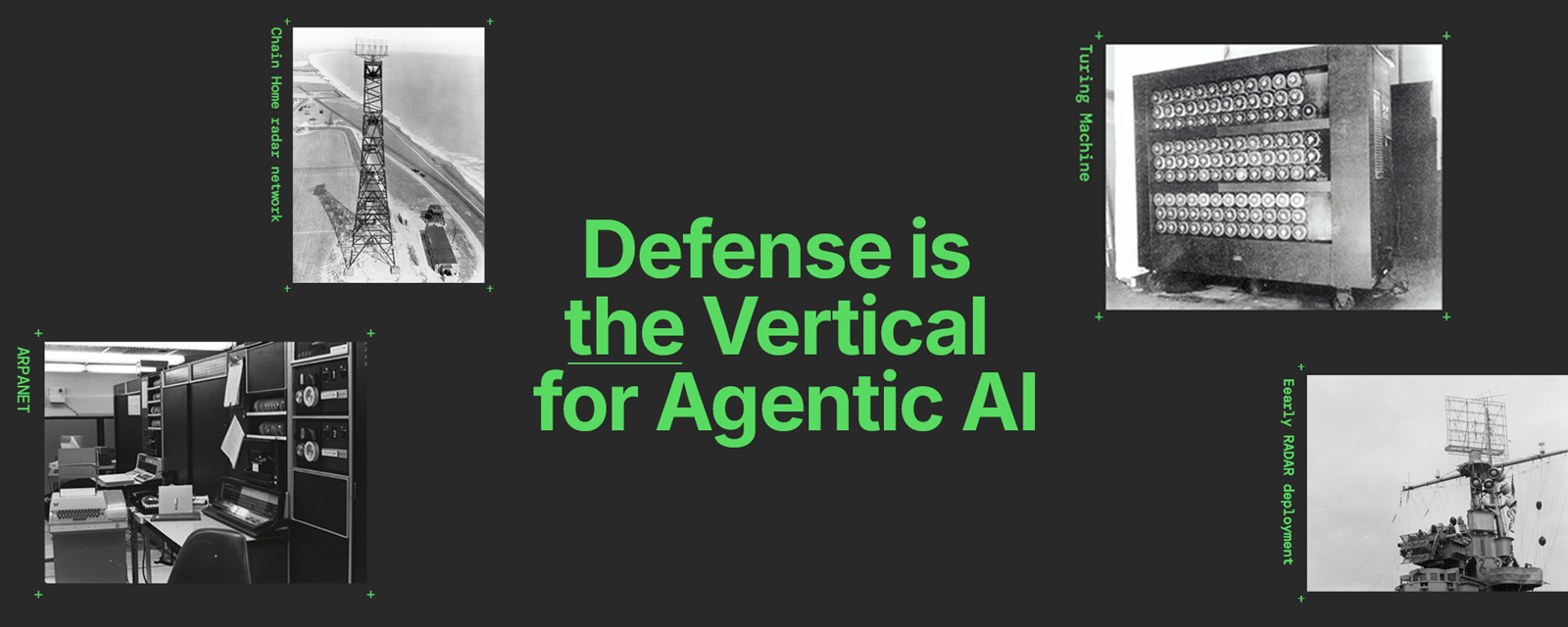The best engineers seek out hard technical challenges with real-world impact. AI agents have opened an endless frontier of opportunities, and the real question is what to build first. If you want to work on the problems that matter most—in an industry with a long history of proving new technologies—join us in defense.
Decisions at Global Scale
Defense and national security users are not just another enterprise customer. Their decisions ripple across continents in real-time—affecting logistics chains, economic flows, diplomatic posture, and even the safety of millions of people. When a combatant commander makes a decision, it can mean redirecting fleets, repositioning thousands of personnel, or recalibrating a nation’s deterrence posture.
Those decisions are powered by the work of tens of thousands of analysts—processing huge datasets, following well-documented doctrinal procedures, and producing structured work products that feed into command decisions. Agents act as a force multiplier for analysts—digesting large volumes of data, running through structured workflows at machine speed, and surfacing the most relevant insights. They free human operators to focus on judgment, creativity, and the decisions that move the mission forward.
This isn’t a far-off vision—agents are already supplementing analysts across domains today, showing how human-machine teaming can scale to the size of global operations. Vannevar’s platform has 1 PB of data and is growing at 10 TB per week. For engineers, that means building agents that can handle analysis at a scale no single human could—synthesizing streams from satellites, sensors, logistics, and online sources into actions that keep pace with global operations.
Dynamic by Nature
Defense problems are never the same twice. Every operation begins with doctrine, courses of action, and playbooks that provide a structured foundation. But once an operation is underway, adversaries are adapting in real-time—introducing new tactics, exploiting gaps, and forcing planners to adjust. A process that is well-documented on paper becomes dynamic the moment it meets an active competitor.
That tension is why agents are such a natural fit for defense. They anchor themselves in the structure of doctrine and procedures while also adjusting course when new data or conditions demand it. Agents that can follow the playbook and help re-write it in real-time are the ones that will matter most.
We see this regularly in strategic competition. A rigidly planned military exercise can spark an unexpected countermove, an access route assumed to be open might suddenly be contested, or a new capability might appear in theater without warning. Each move forces a countermove, and the cycle repeats. Doctrine and procedures provide the scaffolding, but the reality is that every scenario unfolds differently because competitors are always working to get outside each other’s expectations.
At Vannevar, we tackle this challenge by pairing the best of Silicon Valley engineering with veterans and experts who know the mission inside and out. Our teams build cutting-edge agent architectures while sitting shoulder-to-shoulder with former operators and analysts who understand how decisions actually get made in the field. That combination—world-class engineering plus domain expertise—lets us design agents that are both technically advanced and operationally relevant.
A Proving Ground for Technology
Too many engineers think of Defense as a laggard in terms of technology. In reality, defense has repeatedly been the launchpad and proving ground for world-changing technologies—often decades before the private sector caught up.
Take the Turing machine. What we now describe as the theoretical foundation of computer science was born from Alan Turing’s work on breaking the German Enigma cipher during WWII. The urgency of cryptanalysis forced defense to pioneer programmable computation—long before “software engineering” was a discipline.
Or look at radar. In the late 1930s, British engineers built the Chain Home radar network to detect incoming Luftwaffe bombers. These systems transmitted high-frequency radio waves and measured the reflections to calculate aircraft distance and altitude in real-time—essentially an early form of sensor fusion. That network was decisive in the Battle of Britain, and the U.S. Office of Scientific Research and Development (led by Vannevar Bush) later partnered with the military to operationalize radar at sea, protecting merchant convoys during the Battle of the Atlantic. Together, those efforts not only secured critical supply lines but also created the blueprint for air traffic control and weather monitoring systems that we rely on today.
The internet itself traces directly to a defense program. DARPA’s ARPANET solved a military problem: how to maintain communications if parts of the network were destroyed by nuclear attack. The solution—packet switching, decentralized routing, fault-tolerant protocols—is the backbone of the global internet. What started as four connected nodes in 1969 became the most important distributed system ever built.
These technologies were invented out of necessity, even though they had early challenges. Radar shows false echoes—much like LLMs hallucinate today. ARPANET struggled with routing loops, just as agents are learning how to call the right tools in the right order. And Turing’s codebreaking machine needed 30 minutes of prep before each run, not unlike the hand-curated data pipelines powering LLM applications. What made them successful wasn’t perfection on day one, but engineers relentlessly testing and innovating until they were battle-ready.
Building Agents at Vannevar
We are looking for engineers ready to run through these challenge with us. At Vannevar, engineers don’t work on abstract problems or theoretical systems. They work on some of the hardest challenges in AI—reliability, human-machine teaming, and large-scale, highly analytical agent workflows—while delivering products that have direct, mission-critical impact.
Defense isn’t a domain where you can drop in a general model and hope it works. It requires agents that are vertically integrated, developed alongside mission experts, and deployed in a purpose built product. This approach is how we successfully deployed Agentic AI at Talisman Sabre 2025. If you want to build AI that doesn’t just ship, but shapes outcomes in the real world, defense is the vertical. And Vannevar is the team.








